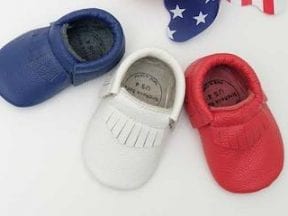Dynamic pricing is a tactic wherein sellers adjust prices to reflect real-time market conditions.
When a competitor’s prices change or when supply or demand shifts, a store reacts. When inventory expands, prices contract. An item that delivers more value sells for a higher price.
Prices Communicate
Imagine a direct-to-consumer brand that sells two water bottles. The first has a charcoal filtration system, and the second has a “no-spill” lid.
The bottles cost the same to manufacture. Since both are essentially fancy water containers, the brand sells them for the same price — $59.99 — and earns about $25 per sale.
Yet the filtration bottle outsells the “no-spill” bottle 20 to 1.

The water bottles cost the same to produce but deliver different value to shoppers.
A bottle with a filtration system has a different use than one with a “no-spill” lid. Hikers and campers purchase the filtration bottle for safe drinking water — to dip the bottle in a steam and drink without the fear of ingesting microbes or chemicals.
In contrast, the market for a “no-spill” lid is almost certainly larger than for filtration bottles, but it also provides relatively less value. A shopper might not pay a $20 premium to avoid spilling water.
Thus the price of the “no-spill” bottle doesn’t fit the market. Sales will leap if the brand lowers its price to $39.99, earning $5 per item. Suddenly, “no-spill” water bottles will outsell filtration bottles 50 to 1.
Prices should reflect an item’s value, not the cost of production.
Dynamic Prices
Market-based prices have natural benefits. Let’s consider a few.
More revenue. Our imaginary DTC brand increased the sales of “no-spill” bottles when it lowered its prices. Similar scenarios are widespread in practice.
The price of an item is essentially an agreement between buyer and seller, a mutually beneficial exchange of value. Sellers seek more profit, and buyers want to save money. The price is where the parties agree.
But buyers differ. For example, at $59.99, perhaps one shopper in 100 buys the “no-spill” water bottle. But at $49.99, it’s 20. Finally, at $39.99, 60 shoppers purchase.
Hence lowering the price from $59.99 to $39.99 increases revenue per 100 visitors from $59.99 for one sale to $2,399.40 for 60.
More profit. Dynamic pricing improves bottom-line profits.
Recall that at $59.99, the DTC water bottle maker earned $25 in profit per sale. As the price moves down, so does the per-unit profit. Thus, at price points of $49.99 and $39.99, the brand earns the same profit: $300.
A good dynamic pricing strategy shifts the price to maximize overall profits.
| Price | Profit per Unit | Units Sold per 100 Visits | Sales Volume | Total Profit |
|---|---|---|---|---|
| $59.99 | $25.00 | 1 | $59.99 | $25.00 |
| $49.99 | $15.00 | 20 | $999.80 | $300.00 |
| $39.99 | $5.00 | 60 | $2,399.40 | $300.00 |
Adaptability. Real-time, dynamic prices can move prices by pennies or dollars in response to fluctuations in demand, competitors, and even seasonality.
Ideal pricing for a water bottle might be $39.99 on a winter day and $55.99 in August.
Product development. Dynamic prices reveal consumer preferences and needs. The data can refine marketing strategies, customer experiences, and product development.
AI-powered
Dynamic pricing has existed for decades, but artificial intelligence makes it easier. A merchant in 2025 using a modern ecommerce platform will have multiple AI-powered real-time pricing solutions from which to choose.
Once implemented, dynamic pricing helps sellers and buyers.




